The Corrosion Resistance and Mechanism of AT13/Fe-Based Amorphous Composite Coatings
Abstract
:1. Introduction
2. Experimental Procedure
3. Results
3.1. Characterization of Powders and As-Sprayed Coatings
3.2. Corrosion Resistance Measurements
3.2.1. Open Circuit Potential (OPC) Test
3.2.2. Potentiodynamic Polarization Test
4. Immersion Test
4.1. EIS Measurements
4.2. Analysis of the Surface Element
4.3. Analysis of the Corrosion Morphology
5. The Corrosion Mechanism in NaCl Solution
6. Conclusions
Author Contributions
Funding
Conflicts of Interest
References
- Fan, M.; Nawano, A.; Schroers, J.; Shattuck, M.D.; O’Hern, C.S. Intrinsic dissipation mechanisms in metallic glass resonators. J. Chem. Phys. 2019, 151, 144506. [Google Scholar] [CrossRef] [PubMed] [Green Version]
- Best, J.P.; Ast, J.; Li, B.; Stolpe, M.; Busch, R.; Yang, F.; Li, X.; Michler, J.; Kruzic, J.J. Relating fracture toughness to micro-pillar compression response for a laser powder bed additive manufactured bulk metallic glass. Mater. Sci. Eng. A 2020, 770, 138535. [Google Scholar] [CrossRef]
- Li, Z.; Huang, Z.; Sun, F.; Li, X.; Ma, J. Forming of metallic glasses: Mechanisms and processes. Mater. Today Adv. 2020, 7, 100077. [Google Scholar] [CrossRef]
- Zhang, Y.; Zuo, T.T.; Tang, Z.; Gao, M.C.; Dahmen, K.A.; Liaw, P.K.; Lu, Z.P. Microstructures and properties of high-entropy alloys. Prog. Mater. Sci. 2014, 61, 1–93. [Google Scholar] [CrossRef]
- Zhang, C.; Chu, Z.; Wei, F.; Qin, W.; Yang, Y.; Dong, Y.; Huang, D.; Wang, L. Optimizing process and the properties of the sprayed Fe-based metallic glassy coating by plasma spraying. Surf. Coat. Technol. 2017, 319, 1–5. [Google Scholar] [CrossRef]
- Yasir, M.; Zhang, C.; Wang, W.; Jia, Y.; Liu, L. Enhancement of impact resistance of Fe-based amorphous coating by Al2O3 dispersion. Mater. Lett. 2016, 171, 112–116. [Google Scholar] [CrossRef]
- Chu, Z.H.; Wei, F.; Zheng, X.; Zhang, C.; Yang, Y. Microstructure and properties of TiN/Fe-based amorphous composite coatings fabricated by reactive plasma spraying. J. Alloy Compd. 2019, 785, 206–213. [Google Scholar] [CrossRef]
- Cai, Y.; Luo, Z.; Feng, M.; Liu, Z.; Huang, Z.; Zeng, Y. The effect of TiC/Al2O3 composite ceramic reinforcement on tribological behavior of laser cladding Ni60 alloys coatings. Surf. Coat. Technol. 2016, 291, 222–229. [Google Scholar] [CrossRef]
- Chu, Z.; Deng, W.; Zheng, X.; Zhou, Y.; Zhang, C.; Xu, J.; Gao, L. Corrosion Mechanism of Plasma-Sprayed Fe-Based Amorphous Coatings with High Corrosion Resistance. J. Therm. Spray Technol. 2020, 29, 1111–1118. [Google Scholar] [CrossRef]
- Chu, Z.; Zheng, X.; Zhang, C.; Xu, J.; Gao, L. Study the effect of AT13 addition on the properties of AT13/Fe-based amorphous composite coatings. Surf. Coat. Technol. 2019, 379, 125053. [Google Scholar] [CrossRef]
- Chu, Z.; Yang, Y.; Chen, X.; Yan, D.; Huang, D.; Lei, W.; Liu, Z. Characterization and tribology performance of Fe-based metallic glassy composite coatings fabricated by gas multiple-tunnel plasma spraying. Surf. Coat. Technol. 2016, 292, 44–48. [Google Scholar] [CrossRef]
- Ham, G.S.; Kim, K.W.; Lee, K.A. Fabrication, microstructure and wear properties of novel Fe-Mo-Cr-C-B metallic glass coating layers manufactured by various thermal spray processes. Mater. Des. 2020, 195, 573–575. [Google Scholar] [CrossRef]
- Yang, Y.; Zhang, C.; Peng, Y.; Yu, Y.; Liu, L. Effects of crystallization on the corrosion resistance of Fe-based amorphous coatings. Corros. Sci. 2012, 59, 10–19. [Google Scholar] [CrossRef]
- Huang, B.; Zhang, C.; Liao, H.L. Wear and corrosion resistant performance of thermal-sprayed Fe-based amorphous coatings: A review. Surf. Coat. Technol. 2019, 377, 124896–124899. [Google Scholar] [CrossRef]
- Wang, G.; Huang, Z.L.; Zhu, X.B. Spraying of Fe-based amorphous coating with high corrosion resistance by HVAF. J. Manuf. Process. 2016, 22, 34–38. [Google Scholar] [CrossRef]
- Wang, Y.; Jiang, S.L.; Zheng, Y.G.; Ke, W.; Sun, W.H.; Wang, J.Q. Electrochemical behaviour of Fe-based metallic glasses in acidic and neutral solutions. Corros. Sci. 2012, 63, 159–173. [Google Scholar] [CrossRef]
- Zhang, C.; Chan, K.C.; Wu, Y.; Liu, L. Pitting initiation in Fe-based amorphous coatings. Acta Mater. 2012, 60, 4152–4159. [Google Scholar] [CrossRef]
- Wu, J.; Zhang, S.D.; Sun, W.H.; Gao, Y.; Wang, J.Q. Enhanced corrosion resistance in Fe-based amorphous coatings through eliminating Cr-depleted zones. Corros. Sci. 2018, 136, 161–173. [Google Scholar] [CrossRef]
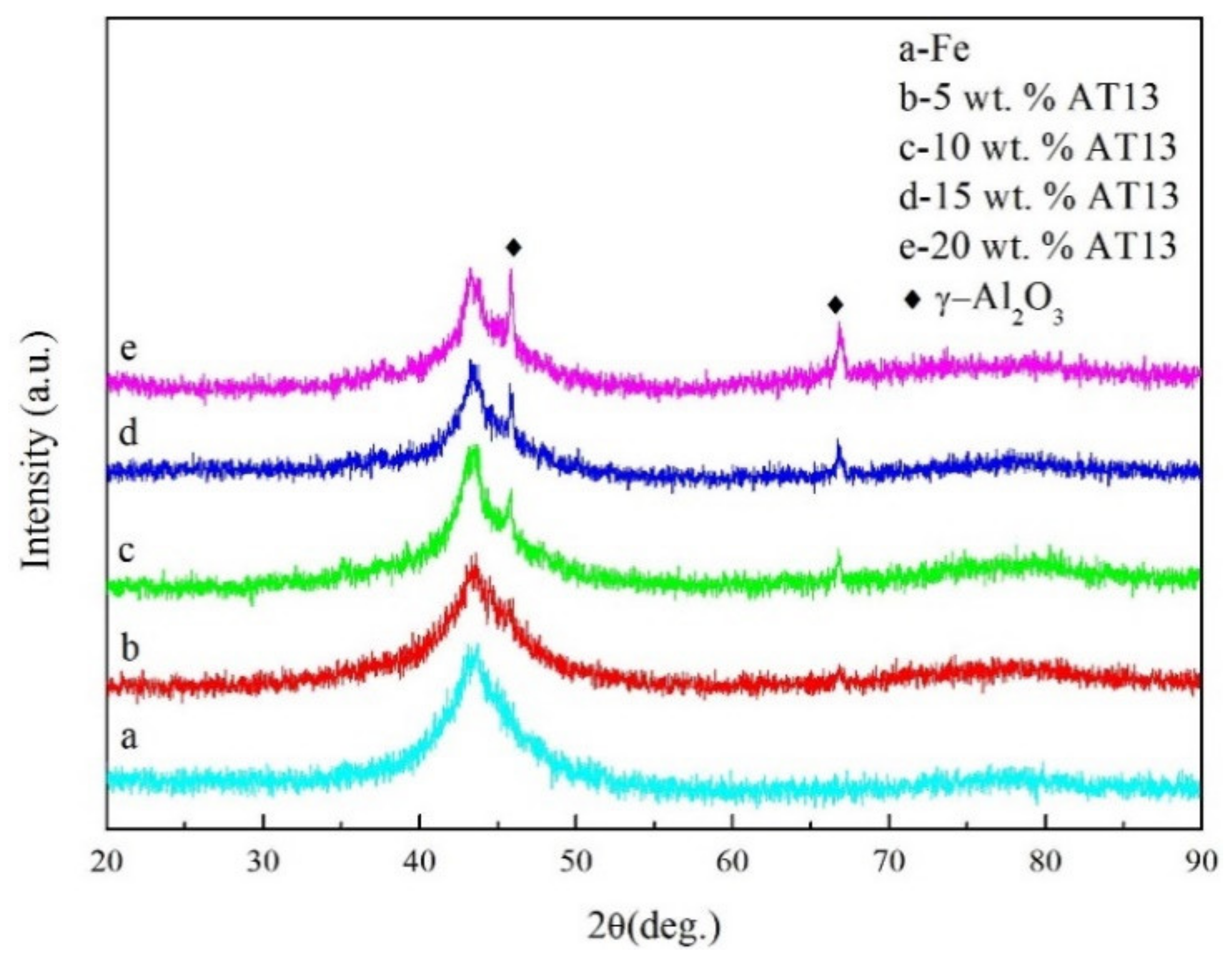
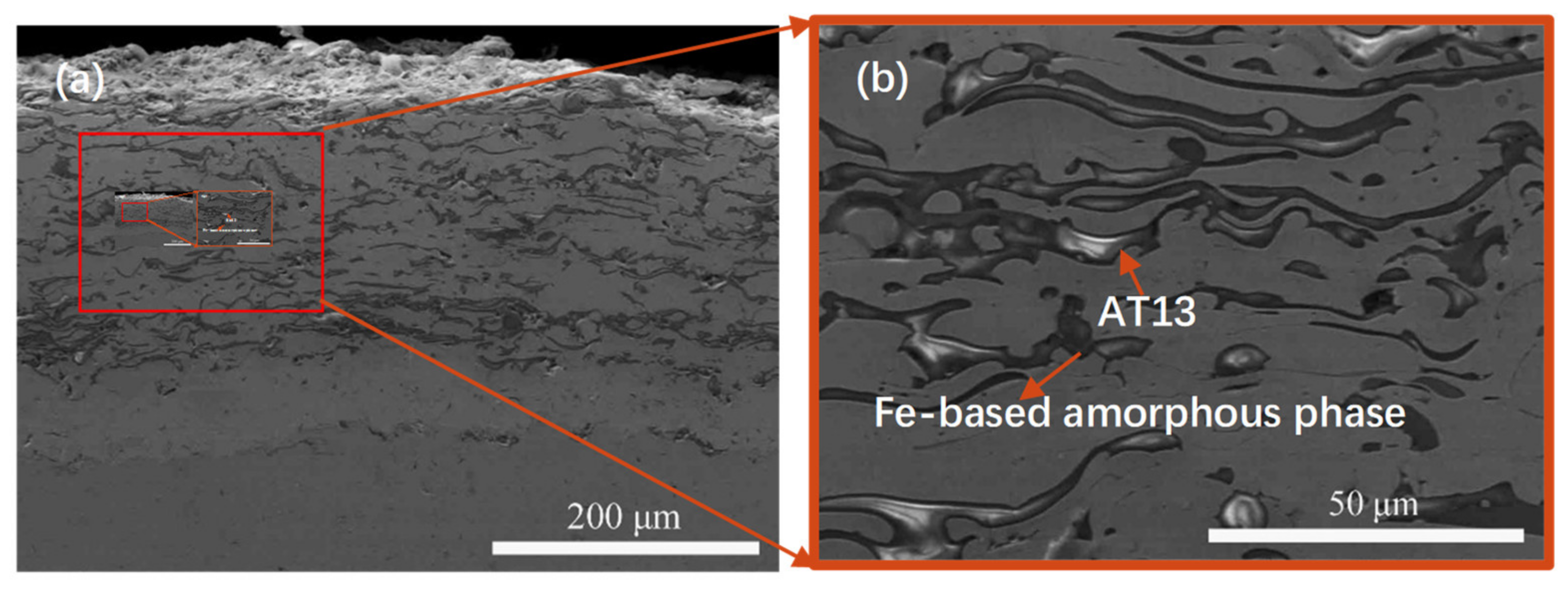
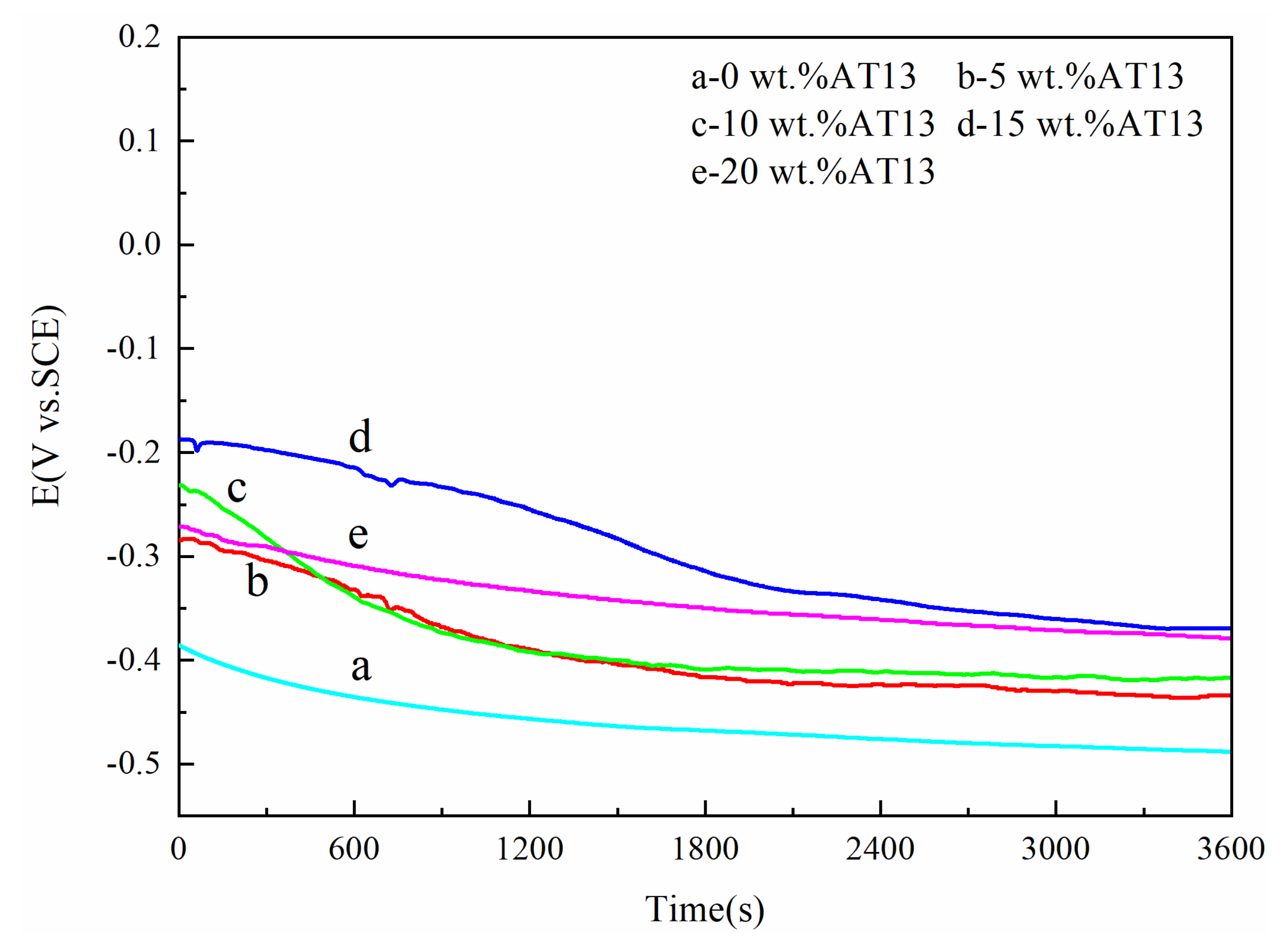


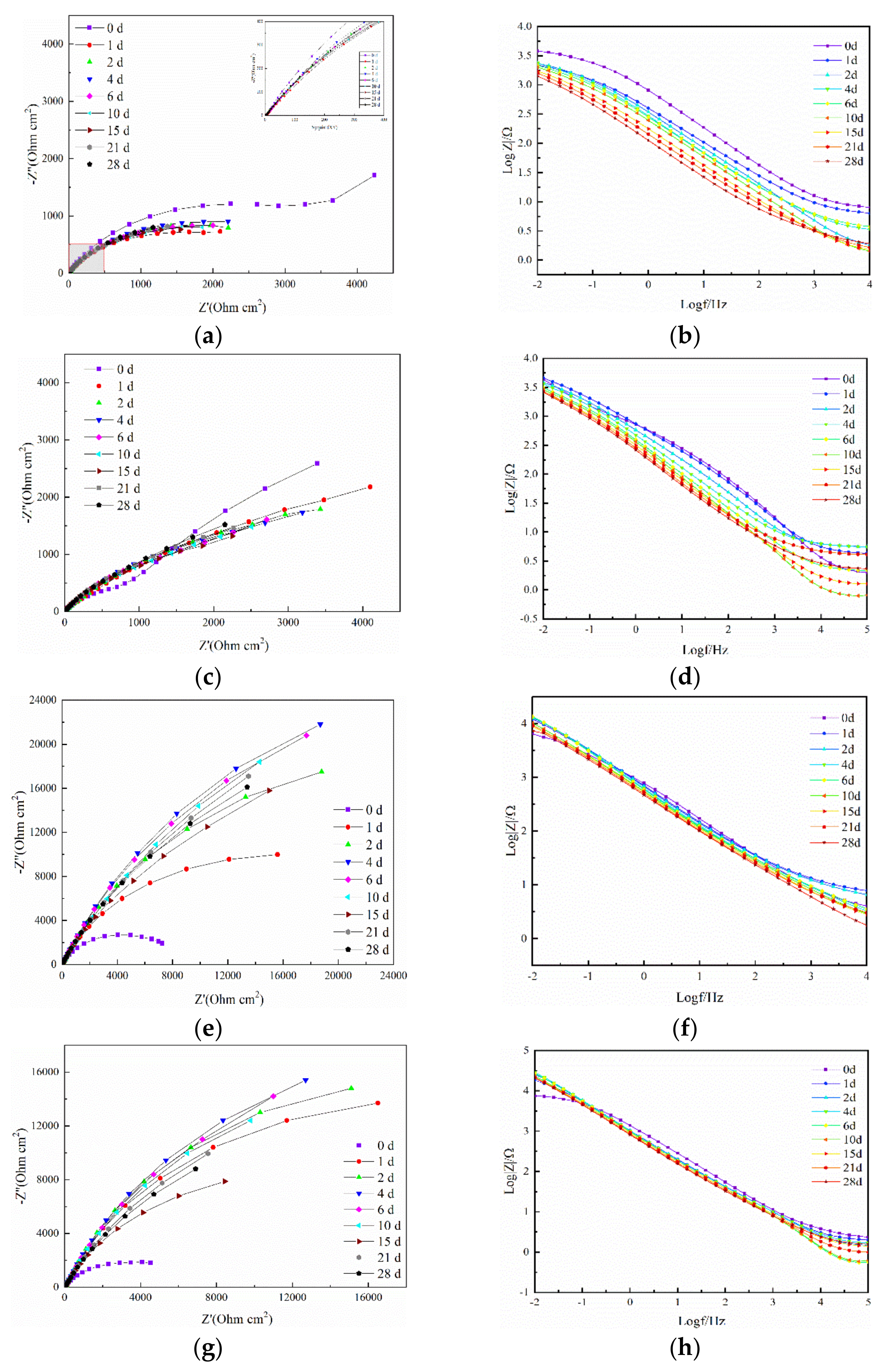

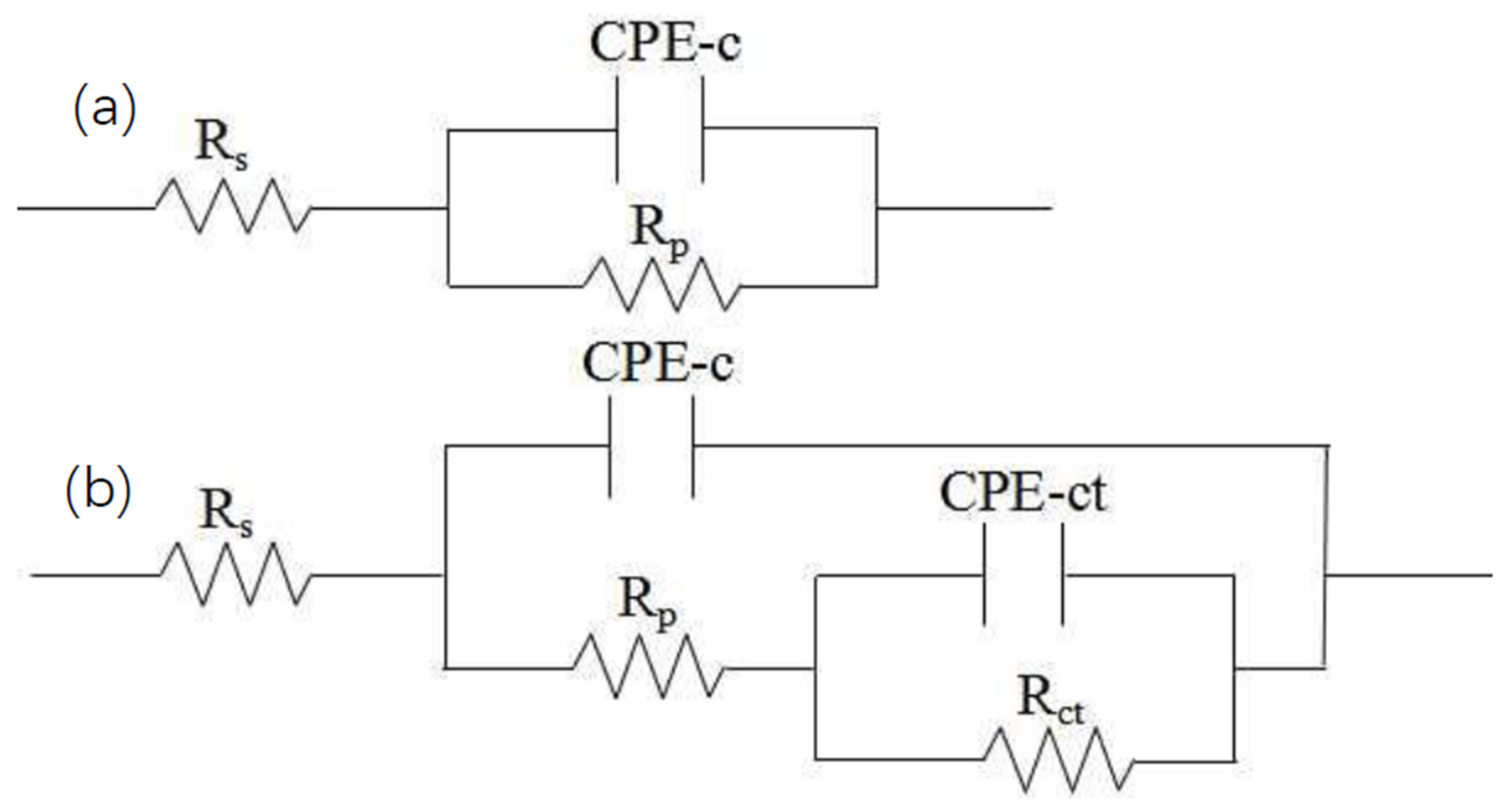

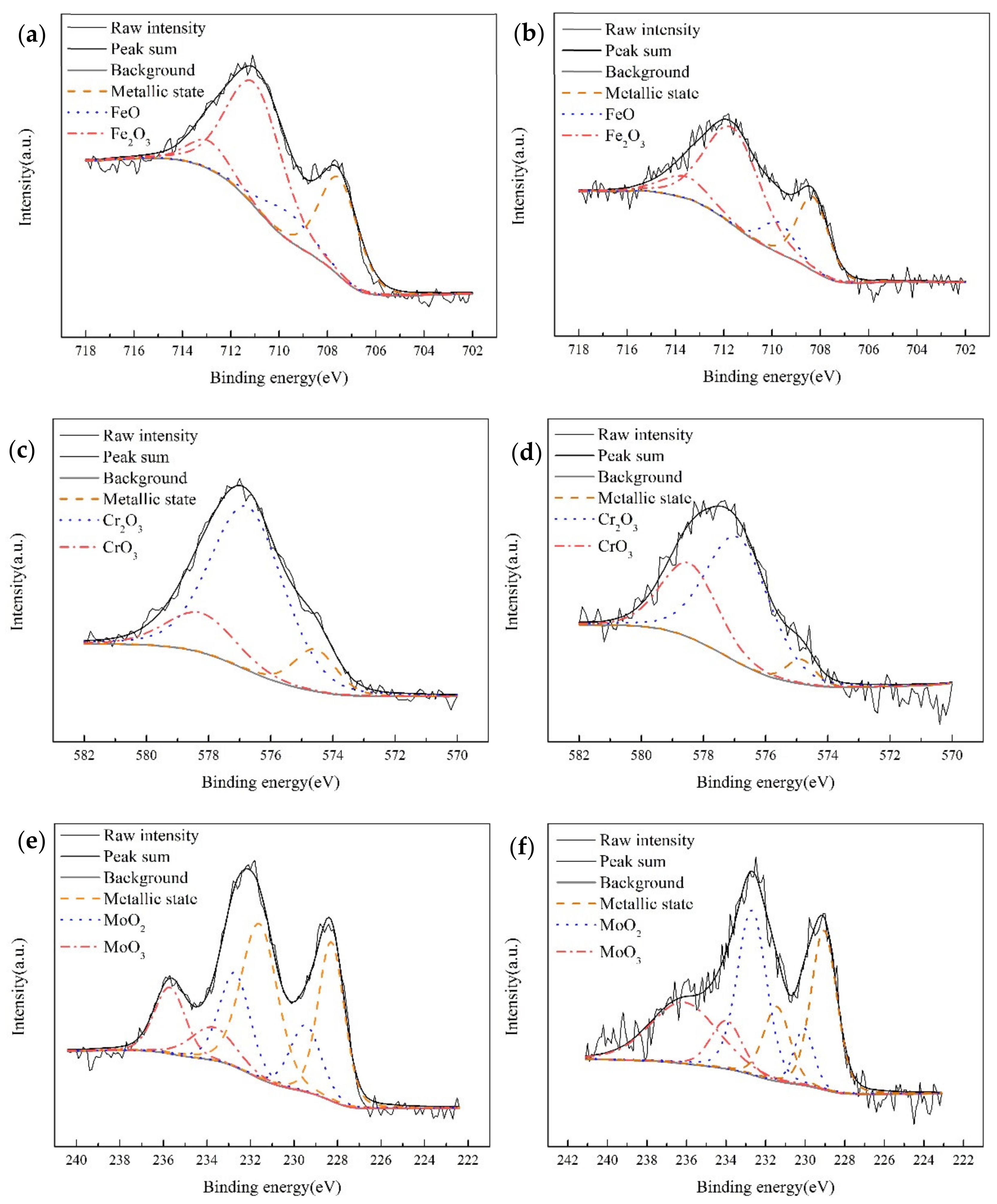

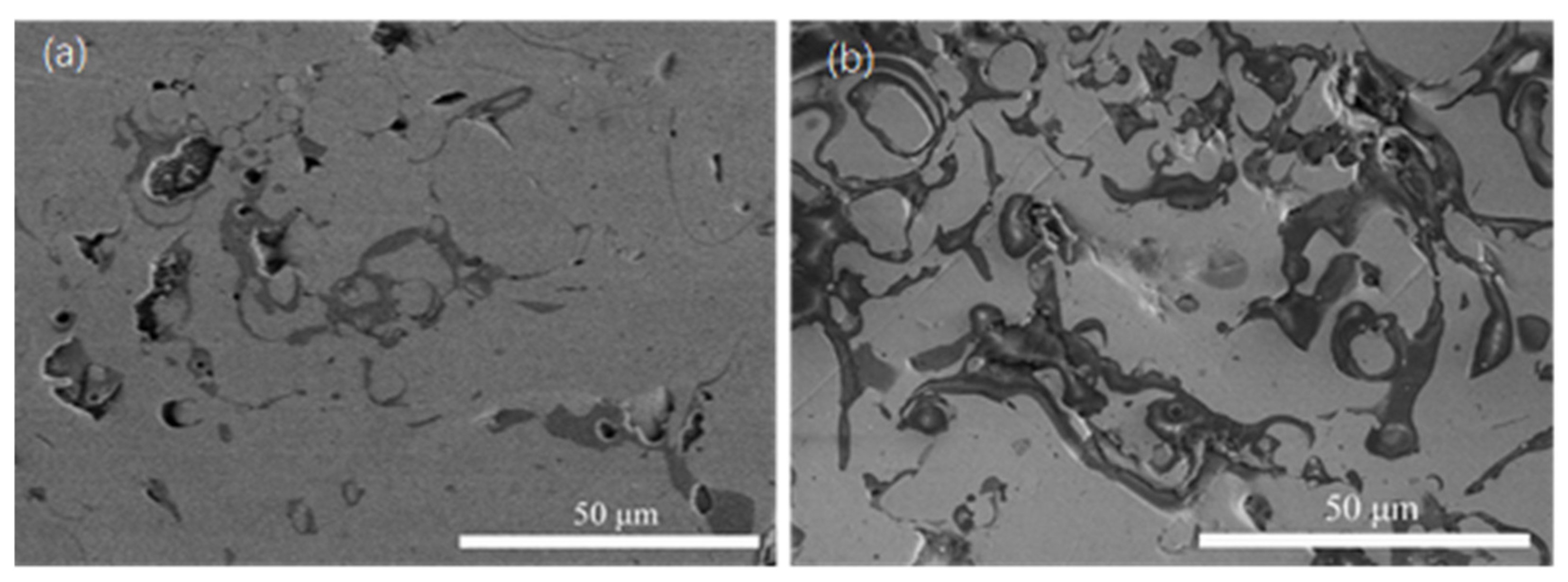
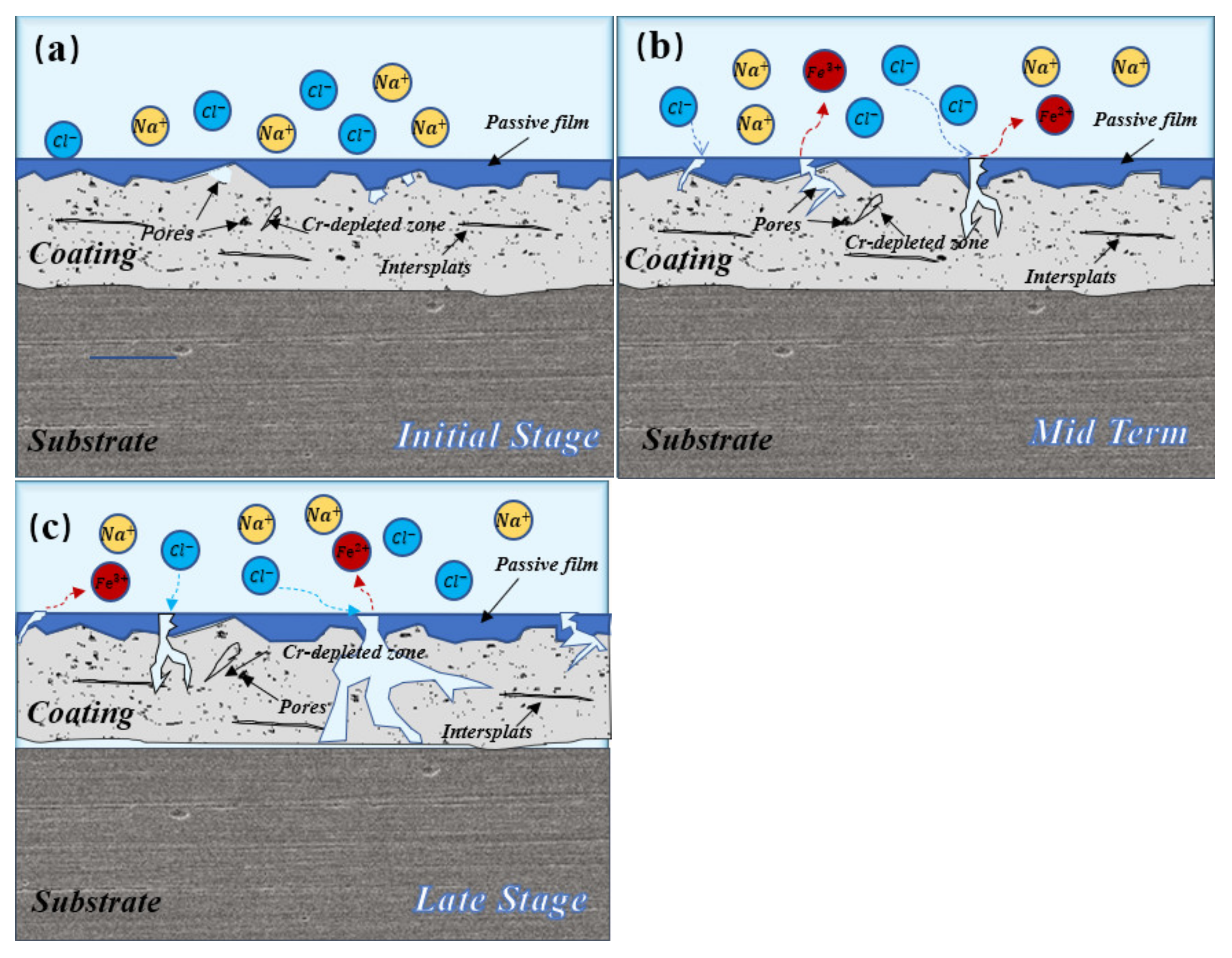
| Corrosive Medium | Coating | Ecorr/mV | icorr/A cm−2 | ipass/A cm−2 | Etr/mV |
|---|---|---|---|---|---|
| 3.5% NaCl | Fe | −580 | 5.14 × 10−5 | 5.4 ± 0.10 × 10−3 | 867 |
| 5 wt.% AT13 | −519 | 7.50 × 10−6 | 6.23 × 10−4 | 905 | |
| 10 wt.% AT13 | −467 | 5.01 × 10−6 | 5.12 × 10−4 | 993 | |
| 15 wt.% AT13 | −411 | 1.75 × 10−6 | 5.37 × 10−4 | 1236 | |
| 20 wt.% AT13 | −430 | 4.06 × 10−6 | 6.94 × 10−4 | 1012 |
Publisher’s Note: MDPI stays neutral with regard to jurisdictional claims in published maps and institutional affiliations. |
© 2021 by the authors. Licensee MDPI, Basel, Switzerland. This article is an open access article distributed under the terms and conditions of the Creative Commons Attribution (CC BY) license (https://creativecommons.org/licenses/by/4.0/).
Share and Cite
Chu, Z.; Teng, S.; Zhou, Y.; Zheng, X.; Xu, J.; Wang, F.; Zhang, B. The Corrosion Resistance and Mechanism of AT13/Fe-Based Amorphous Composite Coatings. Micromachines 2022, 13, 56. https://doi.org/10.3390/mi13010056
Chu Z, Teng S, Zhou Y, Zheng X, Xu J, Wang F, Zhang B. The Corrosion Resistance and Mechanism of AT13/Fe-Based Amorphous Composite Coatings. Micromachines. 2022; 13(1):56. https://doi.org/10.3390/mi13010056
Chicago/Turabian StyleChu, Zhenhua, Shikun Teng, Yuyun Zhou, Xingwei Zheng, Jingxiang Xu, Fang Wang, and Baosen Zhang. 2022. "The Corrosion Resistance and Mechanism of AT13/Fe-Based Amorphous Composite Coatings" Micromachines 13, no. 1: 56. https://doi.org/10.3390/mi13010056
APA StyleChu, Z., Teng, S., Zhou, Y., Zheng, X., Xu, J., Wang, F., & Zhang, B. (2022). The Corrosion Resistance and Mechanism of AT13/Fe-Based Amorphous Composite Coatings. Micromachines, 13(1), 56. https://doi.org/10.3390/mi13010056






